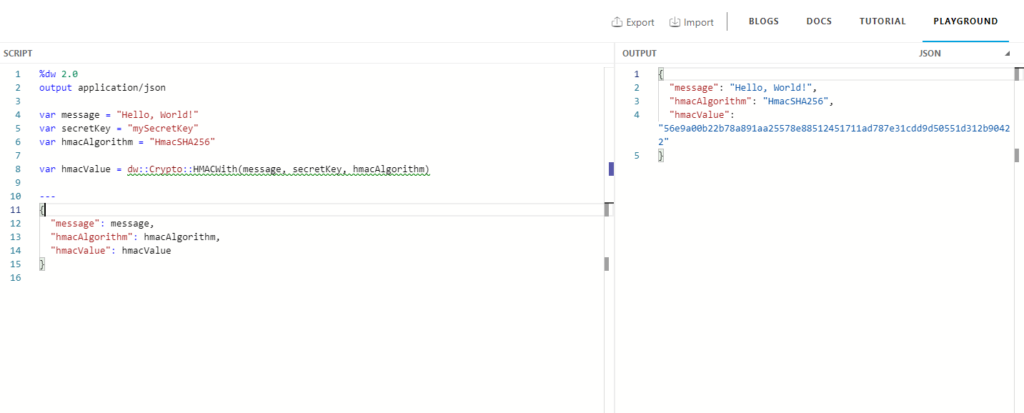Exploring the Power of Mule DataWeave Crypto Functions (dw::Crypto)
Introduction
In the world of data integration and transformation, MuleSoft’s DataWeave is a powerful tool that enables developers to manipulate and transform data with ease. One of the key features of DataWeave is its dw::Crypto functions, which provide cryptographic capabilities for securing sensitive data. In this blog post, we will delve into the world of dw::Crypto functions and explore their functionalities and potential use cases.
Section 1: What are dw::Crypto Functions?
dw::Crypto functions are a set of cryptographic operations provided by the DataWeave language in MuleSoft’s Anypoint Platform. These functions enable developers to perform various hashing, and encoding operations on data. They adhere to industry-standard cryptographic algorithms and protocols, ensuring data security and integrity.
Section 2: The Power of HMACWith in DataWeave Crypto Functions
HMAC (Hash-based Message Authentication Code) is a widely-used cryptographic function that provides message integrity and authentication. The dw::Crypto HMACWith function allows developers to generate HMAC values using different hashing algorithms.
Example explanation:
Let’s consider a practical example to understand the utility of HMACWith in dw::Crypto functions. Suppose you have an integration flow that sends API requests to an external system, and you want to ensure the integrity and authenticity of these requests using HMAC.
Using dw::Crypto HMACWith function, you can easily generate HMAC values. Here’s a sample DataWeave code snippet that demonstrates the usage of HMACWith:
%dw 2.0
output application/json
var message = "Hello, World!"
var secretKey = "mySecretKey"
var hmacAlgorithm = "HmacSHA256"
var hmacValue = dw::Crypto::HMACWith(message, secretKey, hmacAlgorithm)
---
{
"message": message,
"hmacAlgorithm": hmacAlgorithm,
"hmacValue": hmacValue
}
In the above code, we use the dw::Crypto::HMACWith function to generate an HMAC value for the message using the provided secretKey and hmacAlgorithm (in this case, HmacSHA256). The resulting HMAC value is stored in the hmacValue variable.

Section 3: Common Use Cases for HMACWith Function
The HMACWith function can be valuable in several scenarios, including:
- API Security: When sending requests to external systems or APIs, you can use HMACWith to generate an HMAC value based on the request payload and a secret key. This ensures that the message remains intact and has not been tampered with during transit.
- Data Integrity: If you need to verify the integrity of a data payload, such as a file or a message, you can calculate the HMAC value using HMACWith and compare it with the provided HMAC value. If they match, it indicates that the data has not been altered.
- Message Authentication: HMACWith is commonly used in authentication protocols to ensure the authenticity of a message. By generating and verifying HMAC values, you can validate that the message originated from a trusted source.
Section 4: Available dw::Crypto Functions
In addition to HMACWith, dw::Crypto provides a range of other functions, including:
- DataWeave HMACBinary: Ensure data integrity with HMACBinary in DataWeave for robust message authentication and tamper detection.
- DataWeave MD5: Safeguard your data with the MD5 function in DataWeave, providing efficient and reliable data hashing capabilities.
- DataWeave SHA1: Enhance data security using the SHA1 function in DataWeave, offering strong cryptographic hashing for sensitive information.
- DataWeave hashWith: Unlock powerful data transformation possibilities with hashWith function in DataWeave, allowing customizable hashing algorithms for data protection.
